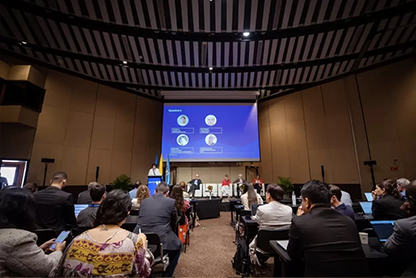2nd WHO Air Pollution & Health Conference: Multi – Dimensional Clean Air Actions

2nd WHO Air Pollution & Health Conference
I. Core Focus and Basic Conference Information
At the 2nd WHO Air Pollution & Health Conference (linked to CCAC collaborative initiatives), Day 1 centered on laying the groundwork for scientific assessment and policy frameworks. Subsequent agendas (Day 2 and beyond) delved into multi – dimensional practical approaches—spanning multi – sector collaboration to cross – border governance. This comprehensive exploration aimed to unlock air pollution prevention, control, and health protection solutions.
II. Multi – Sector Collaboration: The Core Action Path of the Conference
(I) Plenary Session: Dissecting Multi – Dimensional Topics
On Day 2 of the 2nd WHO Air Pollution & Health Conference, the plenary session commenced—focusing on four core themes critical to the conference’s mission:
- Analysis of air pollution sources impacting human health (e.g., industrial emissions, biomass burning)
- The logic behind policy design and implementation by governments at all levels in pollution control
- Effective strategies for intra – governmental and inter – governmental cooperation
- How tools and data can facilitate the efficient implementation of policies
(II) CCAC and Multi – Sector Actions: The Clean Air Flagship Program
Martina Otto, Head of the CCAC Secretariat, explained during the 2nd WHO Air Pollution & Health Conference: Leveraging scientific assessment results, CCAC emphasizes the synergistic relationship between climate and clean air. To this end, they launched the 2024–2026 Clean Air Flagship Program, featuring:
- Developing the AQMx Air Quality Management Communication Platform to enhance air quality management personnel capacity – building
- Initiating the Clean Air Africa Initiative to drive regional cross – border pollution control cooperation
- Focusing on policy implementation in key emission sectors (agriculture, waste management, brick kilns, heavy vehicles, engines)
III. Breaking Through Key Issues: Science – Policy Synergy in Black Carbon Reduction
(I) Black Carbon Governance: Science – Policy Synergy
In the special topics of the 2nd WHO Air Pollution & Health Conference, the scientific release session integrated pivotal studies:
- The World Health Organization systematically reviewed black carbon’s health impacts, confirming threats to glacier melting and respiratory diseases
- Data from Professor Zhu Tong (Peking University): Black carbon emissions in China, North America, and Europe have decreased due to household energy transformation—while rising in other regions
- During policy dialogue, the Clean Air Fund identified three priority areas: cryosphere protection, energy transition, and super pollutant coordinated control
(II) Solid Waste Management: Health Risks and Solutions
Sandra Cavalleri, CCAC Center Coordinator, chaired a parallel session at the 2nd WHO Air Pollution & Health Conference. The focus was on open – air garbage incineration’s health impacts on vulnerable groups (children, women, etc.):
- Of the 200 million tons of global urban solid waste generated annually, 40% is openly incinerated and 30% landfilled—becoming a super pollutant source (methane, black carbon)
- South African Medical Research Council research: Garbage incineration links to respiratory diseases and cognitive impairments. Low – income countries can overcome these via the circular economy model (recycling 70% of usable waste) and economic incentives (food – for – garbage exchanges, deposit refunds)
- Cases from Indonesia, Uganda, etc.: Multi – dimensional policy interventions (source separation, landfill supervision, incineration ban enforcement) reduce pollution hazards
(III) Cross – Border Collaboration: Conventions and Regional Practices
The Convention on Long – Range Transboundary Air Pollution working group hosted a session at the 2nd WHO Air Pollution & Health Conference. It analyzed the convention’s evolution—from acid deposition control to health – coordinated prevention and control:
- Key success elements: solid scientific foundation, unified data, partner trust, and capacity building
- Experiences from Japan, Chile, etc.: Intra – national inter – departmental coordination + cross – border policy alignment to promote “synchronous capacity building and policy formulation”
- United Nations Environment Programme emphasis: While unifying national standards is challenging, cross – border pollution characteristics demand dual – track promotion (unilateral actions + multilateral cooperation)
